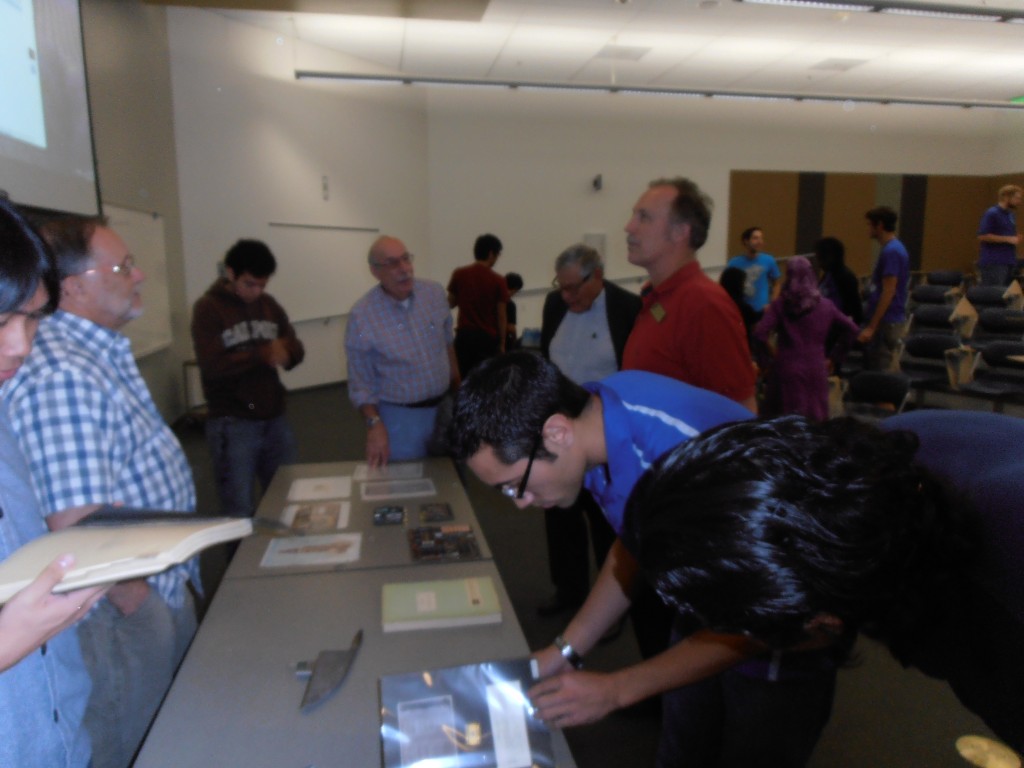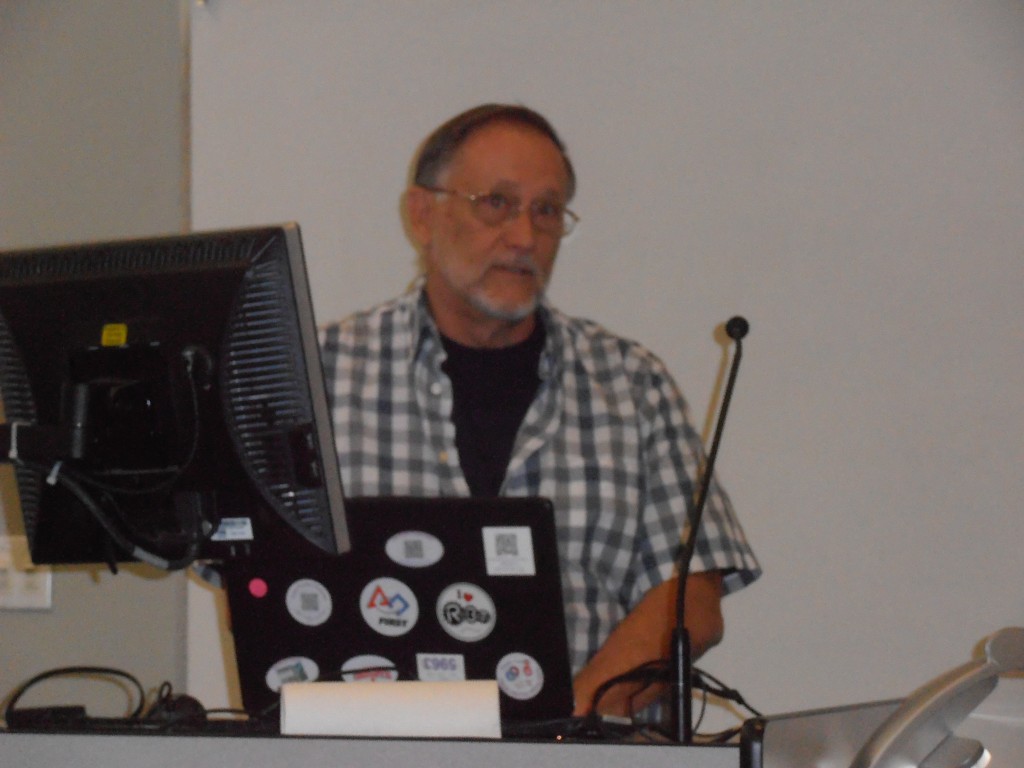Category: EDCAS
A New Year’s Start for Engineers—Communications Workshop—January 25
| January 6, 2014 | Posted by Frank Gomez under CN, COMSOC, CS, EDCAS, EmpNet, MTT/APS, PES |
Comments off
|
IEEE Student Power & Energy Society Chapter at Cal Poly Pomona, and IEEE Foothill Section Power & Energy Society Chapter and IEEE Foothill Section Invite you to attend A COMMUNICATION WORKSHOP FOR ENGINEERS To be held on Saturday, January 25, 2014, time 8:30 Am to 12:00 Noon PRESENTORS […]
The Next Wave—Home Automation is Here—IEEE Foothill Meeting on January 16
| January 6, 2014 | Posted by Frank Gomez under CN, COMSOC, CS, EDCAS, EmpNet, MTT/APS, PES |
Comments off
|
IEEE Young Professionals and IEEE Cal Poly PomonaAnd IEEE FOOTHILL SECTION INVITE YOU TO A TECHNICAL PRESENTATION An introduction to Home Automation using INSTEON by Dan CreggTHURSDAY, January 16th, 2013 At California State Polytechnic University, Pomona Building 162, Room 1002 SUMMARY: Home Automation is becoming more prevalent in the market today. […]
Successful Presentation on Microwave Calibration November 14, 2013
| November 20, 2013 | Posted by Frank Gomez under COMSOC, CS, EDCAS, MTT/APS |
Comments off
|
Thursday, November 14, marked the date of Mr Rusty Myers return to the IEEE Foothill Section to give a talk on “Microwave Calibration Revisited”. He had earlier given such a talk in January; this was a return engagement to update a new group of IEEE Foothill Students and IEEE Members […]
Introductory Workshop on MATLAB Tuesday November 19 at DeVry University Pomona
| November 8, 2013 | Posted by Frank Gomez under CN, COMSOC, CS, EDCAS, EmpNet, MTT/APS, PES |
Comments off
|
Hi All IEEE FOOTHILL Members, especially IEEE Student members, Here is an opportunity for you to learn MATLAB. MATLAB is an important analytic design and development tool for ALL engineering disciplines. Knowing it, and being able to manipulate all the built-in “black-box”models will help you to obtain quantitative answers […]
November 14 Presentation on Microwave Calibration Revisited
| November 5, 2013 | Posted by Frank Gomez under COMSOC, EDCAS, MTT/APS |
Comments off
|
IEEE MTTS/APS CALIFORNIA STATE POLYTECHNIC UNIVERSITY OF POMONA And IEEE FOOTHILL SECTION INVITE YOU TO A TECHNICAL PRESENTATION CALIBRATION—WHY YOUR MHZ TO GHZ DESIGN PROJECT CAN’T LIVE WITHOUT IT A presentation by Mr. Rusty Myers, Director of Engineering, Maury Microwave Corp, Ontario, CA. […]
Microprocessors Subject at ALL Foothill Students Fall Forum October 26
| October 29, 2013 | Posted by Frank Gomez under COMSOC, CS, EDCAS, MTT/APS |
Comments off
|
Saturday, October 26, 2013 was the occasion for the IEEE Foothill Students Fall Forum at Cal Poly Pomona. We welcomed Mr Ray Holt, a 1968 Cal Poly Pomona graduate, now based in Mississippi, back to the campus for an informative presentation on Microprocessors. As Mr Holt was a participant […]
Saturday, October 26, 2013 was the occasion for the IEEE Foothill Students Fall Forum at Cal Poly Pomona. We welcomed Mr Ray Holt, a 1968 Cal Poly Pomona graduate, now based in Mississippi, back to the campus for an informative presentation on Microprocessors. As Mr Holt was a participant in the early progress and excitement in the development of microprocessors in the 1970s era, we had an interesting morning listening to him.
The title of Mr Holt’s presentation was “Design and Development of the First Microprocessor Chip Set”. Yes, the story of how the effort came about, what the engineering problem was, and why the proposed solution led to try microprocessors does make an interesting tale.
As an idea of the many topics that were covered, just consider how Mr Holt described his first job after graduation from Cal Poly Pomona. He had completed some courses in basic amplifier design, so when he received his job offer letter from Garrett Air-Research, he was told he would start work building power amplifiers. On the first day, the welcoming HR person, noting that he had taken a single course related to computers, and noting that very few of the current engineers there had taken any such courses, immediately told him instead to report to a department that was involved with “some computer project”. Next, he reports to his new boss, who pulls off the cover of an electro-mechanical “beast box”, packed full of valves, rotary mechanical counters, and assorted gears and drives. He is then told that he would be part of a small team to design and develop a new electronic computer to vie as a replacement for that “beast box” on the new US Navy F-14 aircraft.
Fortunately for Mr Holt, there were some other engineers on that team that had the necessary complimentary skills to get this job done. An applied mathematician deduced and wrote down the differential equations for the aerodynamic functions that the “beast box” processed. Then he converted these into a series of linked difference equations that could be stepped through, one step cycle by cycle. Another team member engineer was able to iteratively determine the structure of the computer processing blocks that would relate to the possible hardware circuits. Thus, Mr Holt was able to tackle the actual circuit hardware implementations.
Mr Holt added more details of the circuit problems that he was facing at that time. He had some circuit choices, but, they had limitations. (TTl Bipolar required too much power; MOS gave too low power; LSI circuits were too new with unquantified reliability and producibility.) So, he decided to go the microprocessor route. This used 20 bit data length; fractional fixed point arithmetic; 374 Khz clock rate; 2.66 microsecond bit time, and all of 9370 Operations per second. Most importantly, it worked. Two such identical units were packaged in one box for redundancy in case one failed during the built-in-test mode, and installed on the US Navy F-14.
Later, his engineering career expanded to some other interesting projects. In the early 1980s he helped develop a 3-dimenional laser scanner for a small company called Digital Optics. This laser scanner later was used in such films as the”Indiana Jones” series. Of course, there are other sides of these job adventures, as Mr Holt related. Only later did he realize the need to have a good accountant and lawyer included in every small EE firm’s business plan right upfront.
At the current time, Mr Holt is helping direct four separate Jr-Sr HS Robotics clubs in rural areas of Mississippi. Some 80 youngsters in total are getting exposed to robotic technology that they have no other realistic means of learning in Mississippi, and are also learning about robotics competitions.
After his presentation, Mr Holt led an active Q/A session with the assembled students, showing some early but completely functioning minicomputer boards, as well as his lab notebooks showing testing all the bit patterns for his F-14 microprocessor. Yes, a successful EE must design, complete and document the unit / system testing for his / her “electronic creation”. Mr Holt gave the students a good example of the best EE practices.
In the afternoon session for this All Foothill Students FallForum, we heard from IEEE students at, UC Riverside, DeVry Pomona, and Cal Poly Pomona. They all have interesting activity plans for their student branches in the current academic year. Both UC Riverside students and Cal Poly Pomona students will have new IEEE club T-shirt design contests this Fall. We expect to see these new winning T-shirt designs soon. Not only do they “enhance revenue” for their respective student clubs, but they are fun events. Several teams of students from UC Riverside and California Baptist University Riverside were engaged in the IEEE International 24 Hour Extreme Programming Challenge, concurrent with this meeting, so they were unable to attend. We are interested in hearing about their experiences at this problem solving event in the near future.

A look at some of the history from the early microprocessor days captives our IEEE Foothill audience
